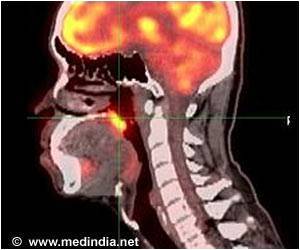With lab-grown human brain cells, the connection between the formation of fatty plaques in the brain and the genetic mutations of GBA1 in Parkinson's disease was identified.

‘Mutation of GBA1, an enzyme metabolizing fatty molecules in the cell is seen in 5 to 10 percent of Parkinson's disease patients’





"We believe this study gives us a better understanding of the effects of GBA1 mutation and its role in the development and progress of Parkinson's disease ," says Han Seok Ko, Ph.D., associate professor of neurology at the Johns Hopkins University School of Medicine Institute for Cell Engineering. According to Ko, Lewy bodies are made of clumps of proteins known as ?-synucleins. In healthy cells, single ?-synuclein proteins tether together in groups of four, called tetramers, which are more resistant to aggregating in the brain. However, in Parkinson's disease , single ?-synucleins stick together in the cell membranes, making it impossible for neurons to properly communicate with one another.
The cellular membrane is like a mosaic where fatty molecules act as the cement that holds proteins in an intricate design. In healthy cells, GBA1 ensures that the "cement" is mixed properly to hold the mosaic together. Ko says he and his team theorized that when GBA1 is mutated, this process goes awry and the cell membrane's composition is changed--determining whether the ?-synuclein tetramers can stay in place.
To test this theory, Ko and his team studied the effects of removing GBA1 in lab-grown human neuron cells using CRISPR-Cas9, a gene editing technology. They treated half of the "edited" cells with miglustat, a drug primarily used to block the production of fatty molecules, and observed the protein levels in the cell.
The scientists found that deleting GBA1 increased levels of a particular fatty molecule called glucosylceramide. When glucosylceramide levels rose, they reported, the number of stable ?-synuclein tetramers fell. The levels returned to nearly normal with miglustat treatment.
Advertisement
"This is interesting because past studies focused on how GBA1 mutations caused single ?-synuclein aggregation, but not its effects on the stable tetramers," says Ko.
Advertisement
In a final test, the scientists wanted to investigate whether replacing GBA1 could restore the function of the membrane mix. After using a virus engineered to add a functional copy of the GBA1 gene into cells, Ko found that ?-synuclein tetramers returned to near-normal levels and the amount of ?-synuclein aggregates was reduced.
In the future, the scientists intend to further investigate the impact the GBA1 protein has on the formation of ?-synuclein tetramers and overall neuronal health.
First observed in 2004, GBA1-associated Parkinson's disease is the most common of the currently known Parkinson's disease mutations. According to the scientists, 5 to 10 percent of Parkinson's disease patients carry a GBA1 mutation.
Source-Eurekalert















